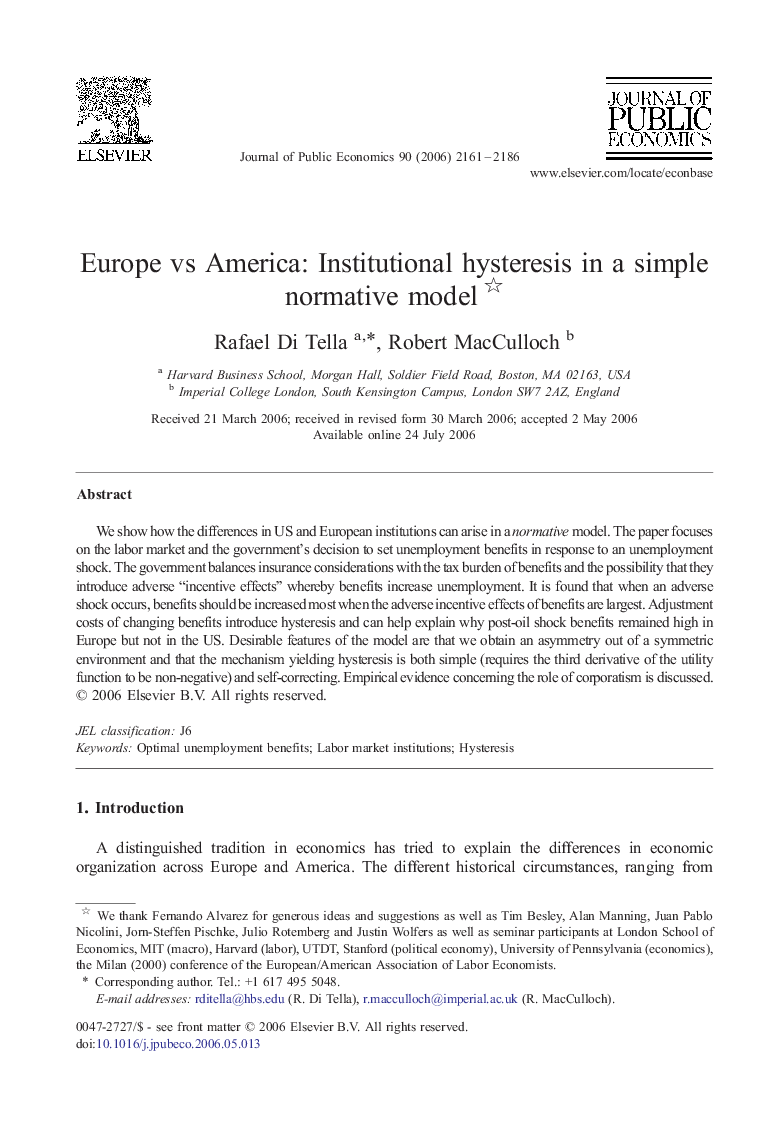| Article ID | Journal | Published Year | Pages | File Type |
|---|---|---|---|---|
| 970349 | Journal of Public Economics | 2006 | 26 Pages |
We show how the differences in US and European institutions can arise in a normative model. The paper focuses on the labor market and the government's decision to set unemployment benefits in response to an unemployment shock. The government balances insurance considerations with the tax burden of benefits and the possibility that they introduce adverse “incentive effects” whereby benefits increase unemployment. It is found that when an adverse shock occurs, benefits should be increased most when the adverse incentive effects of benefits are largest. Adjustment costs of changing benefits introduce hysteresis and can help explain why post-oil shock benefits remained high in Europe but not in the US. Desirable features of the model are that we obtain an asymmetry out of a symmetric environment and that the mechanism yielding hysteresis is both simple (requires the third derivative of the utility function to be non-negative) and self-correcting. Empirical evidence concerning the role of corporatism is discussed.
